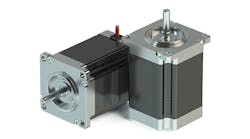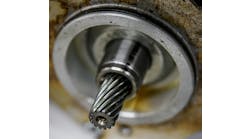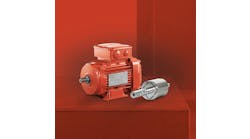As our world of manufacturing grows, we see a demand for accuracy and speed of motion as never before. There are things possible today in machining that would have never been possible if it were not for the advent of the highly precise, super-fast stepper and servo motors that we have. Forty-odd years ago, just making a milling machine move in a circle would have drawn a crowd in many shops. Yet today, we are more concerned with how round that circle can be made. We now are splitting hairs over a few tenths of a thousandth of an inch and are not satisfied with a round part that deviates from roundness more than just one thousandth of an inch.
“What made this quantum leap possible,” you ask? In our opinion, it was a relentless pursuit of quality and a commitment to constant improvement. The companies that are committed to constantly improving continue to redefine the scope of what is possible in the manufacturing world.
Also read: Smarter drives mean more useful motors
When we consider how small a tenth of a thousandth of an inch is in the physical world and how much mass makes up the ball screws, the table and the frame of a machine tool, we can better appreciate what types of high-quality motors it takes to make such a precise motion at a high rate of speed and to be able to stop in a precisely defined spot. Imagine how far off we would be if the motor was off even one or two percent. The accuracy we enjoy today would be difficult if not impossible, to achieve.
To better understand the difference between a stepper motor and a servo motor, look at the basic functions of each. A stepper motor relies on degrees to control positioning and does not need feedback. A servo on the other hand uses feedback to control the torque, the speed of rotation and the position.
Both have their places in our industry but do not serve the same purpose. For example, a stepper motor does not need feedback to operate but can lose synchronism if the load is greater than expected. This could lead to an undesirable result in positioning of a machine table. A servo motor will use the feedback of the load to control its position while it takes the speed of rotation and the torque into account, as well.
To give a real-world example of how this can be used, let’s look at a specific case. Recently we visited a new customer who had purchased its first five-axis milling center to help increase throughput and to produce parts in a one-and-done manner.
Traditionally, the approach to machining a part was to mill the part profile into the first face of a part and then to make additional setups for each new feature. With the new machine, we were able to introduce the customer to tabbed machining with a one-and-done manufacturing approach, which opened them to a whole new world of opportunities and options that they were unaware of.
During the training process, we performed a demonstration of the levels of accuracy that were now available to them. The machine tool has four levels of manual movement for the operator to use for performing tests and setups. It can move in increments of 0.010, 0.001, .0001 and .00001 inches. We placed a tenths indicator on a magnetic base and mounted it to the machine spindle. We then set the needle to zero and tested each of the available motions for repeatability.
This is where the motors make all the difference. Even with the increment set at .0001 inches, we can move one increment on the dial of the indicator in a positive direction and return to exactly zero on the indicator by turning the machine dial back only one click.
Additionally, by utilizing the same test with the .00001 inches setting, we demonstrated that we could move five “clicks” on the control dial and see the needle move from zero to halfway to the first mark on the .0001 inches dial indicator and back to zero on the indicator when we move back only five clicks on the machine dial.
This was a whole new level of accuracy for these folks. The new approaches that are now available and the new methods that can be utilized for their manufacturing will do nothing but help them create better and more efficient ways of manufacturing their parts.
All this accuracy was made real because of a great solid machine—high-quality ball screws driven by the best available servo motors the industry can produce. With these types of motions now being made not only possible but common, we are seeing leaps and bounds in the day-to-day of part manufacturing. This allows engineers to design more accuracy into their creations and helps drive change throughout entire value streams that can better serve our end users and customers.
With our manufacturing world looking for better accuracy all the time and for faster ways to make practically everything, our need for these highly precise motors will only increase. We can all be grateful to the folks who have pushed the envelope of what was possible a few years ago to what is now possible and even becomes commonplace in the manufacturing world.
Andy Watkins is direct sales manager at Romi Machine Tools in Erlanger, Kentucky. Contact him at [email protected].





